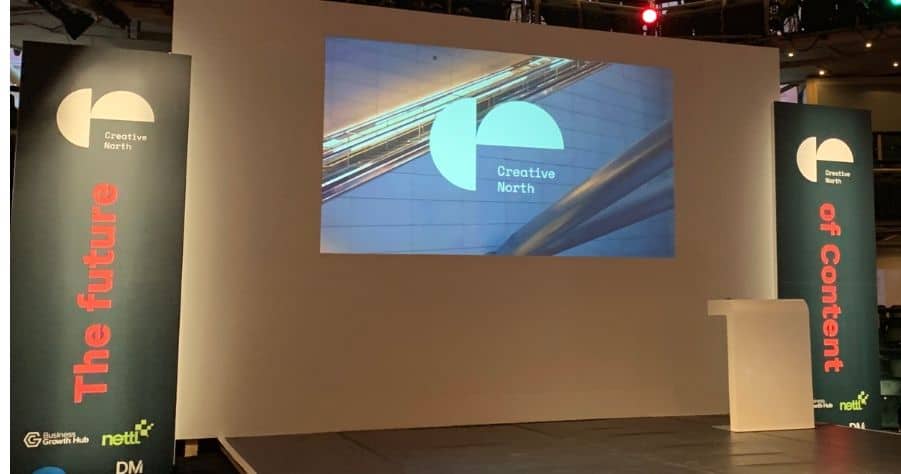Whenever I speak to businesspeople or students around Birmingham, I talk about what a great city we’re in for marketing and creativity. There’s so much talent and opportunity here, making Birmingham a great place to run a copywriting and content agency.
Manchester is another one of those cities – a vibrant and collegiate scene. And I spent a fun day basking in it via the inaugural Creative North Conference on 7 June.
The theme was The Future of Content, and there were thought-provoking discussions from a range of disciplines, all of which were relevant to businesses and marketers looking at how to evolve their strategies and tactics.
Here are the key takeaways:
Authenticity will be increasingly important to marketing success
5 to 10 years ago, companies would say: ‘We want to be like Apple’ when asked what brands they admire. Then it was Innocent Drinks, because their cheeky tone of voice changed the way companies connected with audiences.
But there’s limited mileage in imitation, as many Creative North speakers emphasised. If your content and tone don’t reflect your business, customers are increasingly ruthless about sniffing out the disconnect.
‘Cutting through the noise’ doesn’t mean adopting a persona or using shock-and-awe tactics. (This is ‘tone without content,’ as Nick Parker so eloquently put it.) Rather, it’s about creating content as if your company is a person communicating one-to-one with another person.
Anna Pickard, Head of Brand Communications at Slack, summed this up as: ‘Speak to everyone as if they’re a colleague you admire,’ which is spot-on advice. As copywriter Peter Stephen pointed out, this has to involve showing vulnerability – because vulnerability is an important factor in building trust. And it needs to involve emotional intelligence (as consultant Naomi Timperley rightly said).
Content needs to prioritise individuals, not technologies
Just because you can do something doesn’t mean you should. Roxanne Parker, Paid Social Director at Social Chain, emphasised the importance of having a channel-agnostic strategy.
Don’t think: ‘What should we say on LinkedIn?’ Instead consider, ‘What does Audience X need from us?’ and then figure out what should go on LinkedIn based on how Audience X uses the platform. It sounds obvious, but it’s not so easy when it comes to execution.
Roxanne recommended a 70/20/10 approach to content, which is using:
- 70% of resource towards safe channels and content you know works
- 20% of resource towards new platform features and content executions – for example, testing Facebook Live or LinkedIn Group participation
- 10% of resource towards new ideas and thinking, for example TikTok if you target 16 to 24 year olds
Future content needs to simplify decision making
There’s limited shelf-life for stuff you put out there because you think you ‘should’ be blogging. You have to focus on how you’re helping prospects make a complicated purchasing decision. For all you Gunning Marketing clients out there – you’re familiar with the sorts of questions we ask. Digging into the sales and purchasing processes and stumping you with complicated queries about how customers act in certain situations. These questions help us understand motivations across the decision-making process – so we can deliver the right message at the right time.
I deliberately used that right message/right time cliché here because content marketing is a critical tool in helping customers filter relevant information. Tom Cheesewright, Applied Futurist, reinforced the importance of this approach during his Creative North talk.
Access to increased volumes of information means our brains need help processing – as he said, we need to augment our cognitive capabilities and decision-making abilities. Technology has a vital role to play here, be it through personalisation or data aggregation/filtering. But fundamentally, we like brands that help us choose, and quality content created to help a particular audience overcome a particular problem has a critical role to play in this.
The future isn’t rocket science
Yes, technology is evolving. And the conference experience of the future may involve augmented reality and hyper-personalisation as opposed to a group of like-minded marketers chewing the fat. But this doesn’t change the fundamentals when it comes to marketing generally (or content in particular).
Know your customer. Focus on helping them. And the rest will follow.
PS – I won an advance copy of Tom Cheesewright’s new book, High Frequency Change. Keep an eye on my Twitter – I’ll let you know what I think.


